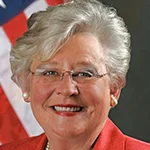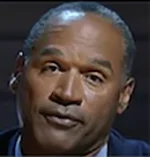Journalists, who had no affiliation with you or your organization, were looked at as more objective, indifferent, non partisan and neutral observers. And so, when they reported positively on what you or your organization stood for, this was perceived as an unbiased affirmation of what you or your organization espoused.
In public relations parlance, by winning this unbiased affirmation from a journalist, you had achieved “third party endorsement” – the golden goose of public relations, worth far more in terms of credibility and value than creating your own, biased advertising. Stated simply, the view of you by an outside reporter was worth far more than your own view of yourself.
Today, however, thanks primarily to the proliferation of social media, public relations has changed. Today, there are multiple media which public relations people deal.
Basically, they break down into three groups.
Paid Media
Paid media is exactly that, media you pay for. The primary format of paid media is advertising. Formerly the province of advertising and marketing departments, public relations advertising has emerged as a combination of advertising and editorial. Ads on such topics as organizational strengths, issues, social responsibility and philanthropy are more prevalent today than ever before.
The plusses of this format, of any advertising, are that you can control the content, the size, the placement, as well as what the advertising boys call “reach” and “frequency” – how many eyeballs you might “reach” through advertising and the number of times, i.e. the frequency, you’d like the ad to run. And how, you ask, can you “guarantee” all of these wonderful benefits? Why, you pay for them, of course. One full page ad in The New York Times or Wall Street Journal can run you just a bit less than $200,000-a-pop. So advertising is not for the frugal.
The big minus of paid media is that, it is far less credible to pat yourself on the back then it is to have some objective source do it for you. Moreover, in today’s hyper-cluttered media world – with endless blogs and web sites and YouTube channels and cable channels and talk radio and print and broadcast, not to mention all the various tablet and mobile and handheld devices that present them to you --- it’s a lot harder to ensure that anyone will even see your ad, much less pay attention to and act on it.
Owned Media
Owned media are the channels we, ourselves, own and operate. They can be web sites, mobile sites, blogs, Twitter accounts, YouTube channels, Facebook pages and anything else that social media comes up with. This is the brave new world of public relations, offering great opportunity for social media-savvy public relations writers.
The benefits of owned media are that, once again, you can control content. But unlike with advertising, the cost of running a Twitter account or a Facebook page is far less than paying for frequent ads designed to reach many people. The cost efficiency of owned media, as well as its versatility in allowing you to reach niche audiences, is an enticing communications prospect.
The big downside of owned media is that, just like advertising, there is the potential – since you, in fact, own it – of not being trusted. Since it’s your own Twitter feed or Facebook page or Instagram account, we don’t expect you to be objective; or, at the very least, we’re suspicious. The key challenge, then, for a public relations person using owned media is to build audience trust. For example, if your organization’s tweets can stimulate others to support your cause or embrace your campaign, you have converted your owned media to earned media; thus achieving coveted credibility.
Earned Media
Earned media represents the legacy public relations value of “third party endorsement.”
Earned media is “earned,” in that objective reporters are persuaded to write favorably about your organization. Earned media translates into positive publicity and is the result of traditional news releases and story pitches and press conferences and other devices based on building amicable relationships with reporters, editors, bloggers and other neutral reporters.
Earned media is the most credible format for public relations writers. However, it is not without risks. A negative story about your organization can trigger crisis; fading support, declining stock price, mounting public opposition and the like. In addition, because there are no guarantees that even the most strategic public relations efforts will result in positive publicity, earned media is elusive.
Stated simply, while you can guarantee a positive ad with paid media or a glowing Facebook account with owned media, you can “guarantee” nothing with earned media. But….when earned media works, the resulting publicity is eminently more powerful and valuable than any other format.
That’s why the essence of traditional public relations practice (with apologies to my social media-maniac friends) – winning “third party endorsement” from objective reporters – is still the bottom line value of positive public relations.


 Southern governors claim they know what's best for their working class, and it's not pay raises... A Ukrainian human rights group played a key role in convincing House Speaker Mike Johnson to hold a vote to send arms to Ukraine, Israel and Taiwan... Trump Media & Technology Group blames short-selling and not lousy outlook for its stock slump.
Southern governors claim they know what's best for their working class, and it's not pay raises... A Ukrainian human rights group played a key role in convincing House Speaker Mike Johnson to hold a vote to send arms to Ukraine, Israel and Taiwan... Trump Media & Technology Group blames short-selling and not lousy outlook for its stock slump. The techniques deployed by OJ Simpson's defense team in the 'trial of the century' served as a harbinger for those used by Donald Trump... People worry about the politicization of medical science just as much as they fret about another pandemic, according to Edelman Trust Barometer... Book bans aren't restricted to red states as deep blue Illinois, Connecticut and Maryland challenged at least 100 titles in 2023.
The techniques deployed by OJ Simpson's defense team in the 'trial of the century' served as a harbinger for those used by Donald Trump... People worry about the politicization of medical science just as much as they fret about another pandemic, according to Edelman Trust Barometer... Book bans aren't restricted to red states as deep blue Illinois, Connecticut and Maryland challenged at least 100 titles in 2023. The NBA, which promotes legalized gambling 24/7, seems more than hypocritical for banning player for placing bets... Diocese of Brooklyn promises to issue press release the next time one of its priests is charged with sexual abuse... Truth Social aspires to be one of Donald Trump's iconic American brands, just like Trump University or Trump Steaks or Trump Ice Cubes.
The NBA, which promotes legalized gambling 24/7, seems more than hypocritical for banning player for placing bets... Diocese of Brooklyn promises to issue press release the next time one of its priests is charged with sexual abuse... Truth Social aspires to be one of Donald Trump's iconic American brands, just like Trump University or Trump Steaks or Trump Ice Cubes. Publicis Groupe CEO Arthur Sadoun puts competition on notice... Macy's throws in the towel as it appoints two directors nominated by its unwanted suitor... The Profile in Wimpery Award goes to the Ford Presidential Foundation for stiffing American hero and former Wyoming Congresswoman Liz Cheney.
Publicis Groupe CEO Arthur Sadoun puts competition on notice... Macy's throws in the towel as it appoints two directors nominated by its unwanted suitor... The Profile in Wimpery Award goes to the Ford Presidential Foundation for stiffing American hero and former Wyoming Congresswoman Liz Cheney. JPMorgan Chase chief Jamie Dimon's "letter to shareholders" is a must-read for PR people and others interested in fixing America and living up to its potential... Get ready for the PPE shortage when the next pandemic hits... Nixing Netanyahu. Gaza carnage turns US opinion against Israel's prime minister.
JPMorgan Chase chief Jamie Dimon's "letter to shareholders" is a must-read for PR people and others interested in fixing America and living up to its potential... Get ready for the PPE shortage when the next pandemic hits... Nixing Netanyahu. Gaza carnage turns US opinion against Israel's prime minister.


 Have a comment? Send it to
Have a comment? Send it to 
No comments have been submitted for this story yet.